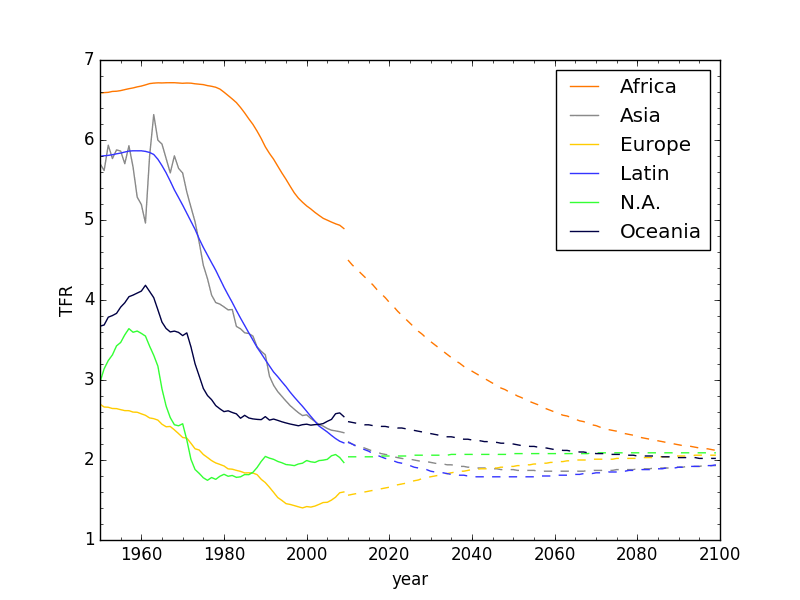The major development underpinning the prospect for an early-century peak in human population and even earlier peak in civilizational power is a rapid and seemingly unexpected decline in fertility rates across the world. All regions except Africa are now below the replacement rate, and still falling.
This short post—probably my last on the population topic for a while—is centered on the following animated GIF showing how the United Nations’ demographic models have expected total fertility rate (TFR) to evolve into the latter part of this century.
Every few years, the U.N. releases a demographic projection model that includes an expectation of how TFR will behave going forward. I have already pointed out the glaring discontinuity (kink) at 2020 in the latest projection and a gallery of systematic major misses at the country level. What the animated GIF above helps us see is how stubborn the imagined far future is—consistently aiming for a one-size-fits-all convergence.
I have referred to the notional TFR endpoint as a “magnet,” acting like a theoretical convergence point to which all regions are attracted. We see how persistently influential this magnet is on projections in the sequence above.
Views: 3688





